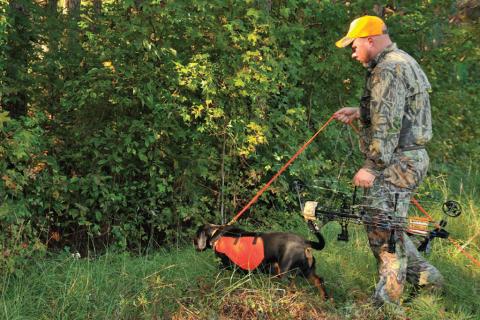Austin Delano | Originally published in GameKeepers: Farming for Wildlife Magazine. To subscribe, click here.
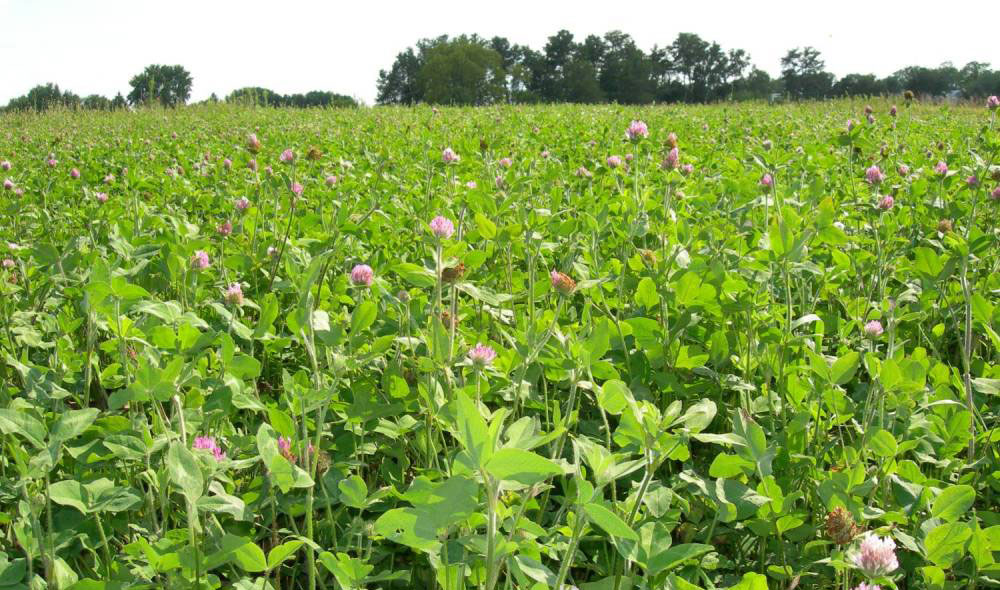
In the food plot world, perennial clover is one of the most talked about and utilized crops available for wildlife. The improved varieties of clover have the ability to grow in a wide variety of soil types and climates - these are just two of the attributes that make it so attractive to hunters, wildlife managers and wildlife. At BioLogic we secure much of our clover seed from a country on the other side of the world, which is a testament to its versatility and effectiveness.
High quality perennial clovers have a unique ability to attract several types of wildlife; it’s not just for whitetails. I have personally watched mule deer, elk, black tails, turkey, quail, feral hogs, and even wood ducks using an established plot of Clover Plus as a food source. These sightings have ranged from Oregon to Florida and many places in between.
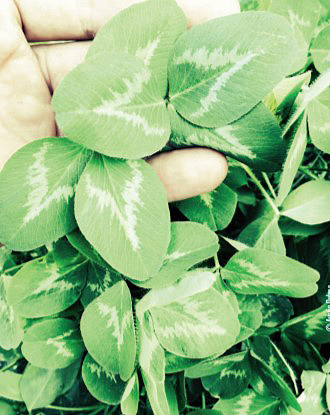
Critical Mass variety in Non Typical, can grow an
impressive amount of highly nutritious forage.
In ten years of answering untold thousands of customer emails, questions on “how to manage clover and other perennials” is by far one of the most asked. Managing a perennial clover field can be a good bit of work in some parts of the country and quite the opposite in others. Weather obviously plays a big role in not only how the clover is growing, but also the amount of weeds that are present and creating competition for the clover.
Although weeds are a problem when you have a lot of rain, I have found you generally have fewer weed problems when there is good rainfall because the clover stays healthy, full and canopied-out to shade the ground. Periods of drought and heat leave gaps and sparsely covered ground, this is usually when weeds have a good chance of getting a foothold and creating a problem in your food plot.
Geography can also be a big factor in how to manage and get the most out of your clover. A manager who lives in the northern part of the states has better weather for planting perennials in the spring vs the south where perennials typically do better when planted during the fall. Spring and summer planted clover in the north or Midwest presents the challenge of weeds soon after planting. Whether it is grasses, broadleaf weeds, or both, they can quickly overtake a plot of perennials since they are slow to establish. Most everyone is going to experience a flush of weeds when their ground is worked to create a proper seedbed.
One advantage to planting in colder climates is the ability to frost seed clover and other perennials. Frost seeding decreases the chances for weed problems during the warm season dramatically because the soil hasn’t been disturbed.
Monitoring your perennial plots is very important if you want them to be an effective food source that produces quality forage for several seasons. Many times gamekeepers go through the trouble of planting a perennial but do nothing the following growing season to manage the crop thus the perennials get overtaken by weeds.
For the southern states, fall planted perennials usually come out really strong and thick in the spring after spending the fall and winter establishing a good root system. Managers will go to their property early in the spring and see the plots doing so great, only to return a month or so later to find major weed problems.
The key to getting a good kill and controlling weeds in perennial plots is identifying them and spraying when they are young and thriving. Once problem grasses and weeds get a foot or two of growth and begin to mature, they do not uptake herbicides as well and are much harder to kill. Most herbicides kill grasses and weeds most effectively when they are 6 inches or under, these weeds can be killed later in growth but it may take an increased rate or multiple sprayings.
Weed Reaper grass herbicide does a great job at killing grasses in any legume crop like clover and is safe to use over chicory as well. There are also herbicides available for broadleaf weed control in clover. Raptor has been the one I have had best results from, it utilizes the active ingredient called imazamox. Spraying when weeds are young is very important for a good kill on broadleaf weeds.
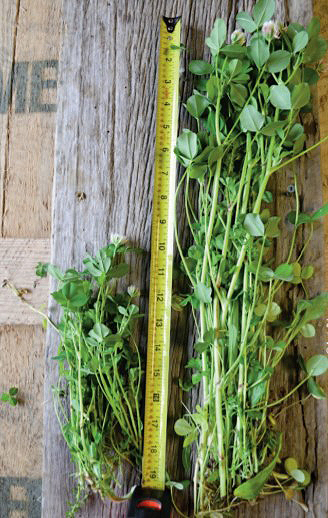
appropriate fertilizer will increase forage output
significantly. Pictured is Clover Plus with and
without fertilizer. MEEN Green was applied to
the plants on the right.
Mowing is also a good way to control weeds in perennials, especially broadleaf weeds. Many grasses will grow back easily and need an herbicide application to kill, but some broadleaf weeds don’t return after being cut. Mowing also encourages new growth in perennials like clover, chicory, alfalfa, etc. Take care to use a mower or bush hog with sharp blades that make a clean cut and don’t cut your plot too low. Crops like clover only need the top couple of inches cut; I like to tell people to mow in thirds to be on the safe side, if your clover is 12 inches tall just mow the top three to four inches. Mowing should only take place when the plot is growing well and has good moisture, try not to mow during a drought or extreme heat when clover is stressed.
How often and how low you mow can greatly influence clover production. Frequent mowing during the spring favors white clover growth. Besides how often you mow, another aspect of white clover maintenance is how much of the plant’s height is removed during mowing. As I mentioned above, I typically tell people to use the rule of thirds, but there may be extenuating circumstances.
Some absentee landowners or people that simply don’t have the time, do not mow often enough - and when they do, because they are “there now and able,” tend to mow too short at the wrong time. Infrequent mowing during the spring will allow the development of larger leaves. However, this results in less stolon production, fewer daughter plants and the loss of new growth. More frequent mowing, but not removing as much of the plant each time, will restrict total plant height, but enhances stolon survival and increases the stem density per acre. More frequent mowing typically equals a thicker, healthier stand that is more appealing to your herd.
As it is when planting anything for whitetails, moisture is the key determinant for success when planting clover. As long as you receive 30 inches of rainfall annually you should be able to find perennials that will work for you. In drier or sandy areas adding deep-rooted perennials like alfalfa and chicory to the blend will help dramatically in stand survival.
When maintained properly and planted in soil which is initially close to a neutral pH, perennial clover blends can produce for six to eight years or more. In more acidic soils because of the need to incorporate lime when the soil eventually reverts back to being too acidic, (depending on your soil type and original pH) you can expect more like three to five years from your crop and then you’ll need to incorporate lime again.
When managed correctly, white clovers will spread by sending out a stem that grows horizontally along the ground surface called a stolon. The stolon will create nodes (a joint on a plant stem where a leaf attaches) where roots will form. This process creates “daughter plants” which will replace the original seedlings after a few years. So persistence is the best in the varieties that create the most stolons, which tend to be the small-leaf white clovers.
Renewal from seed is also possible. If the plants are not browsed heavily or mowed often they will flower and produce seed. Regeneration from seed helps longevity in areas with dry summer conditions, when you shouldn’t be mowing.
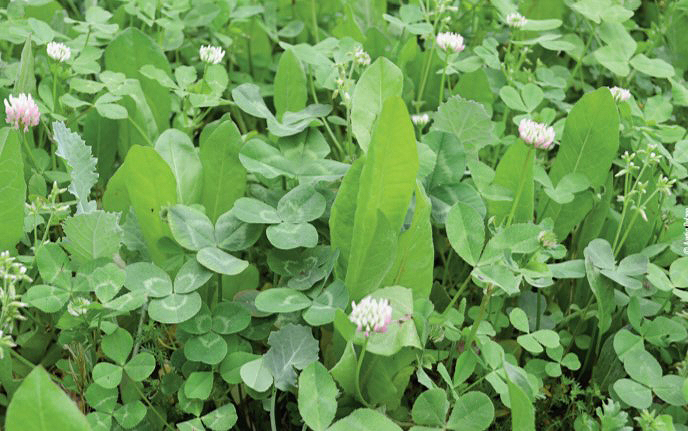
Large-leaved types (like Critical Mass or Ladino) perform best when they are mowed less frequently, or when browsing pressure is limited and plants are allowed to mature. Still mowing is important, especially during the cooler times of the growing season. On the other hand, the small-leaved types respond better to frequent browsing and/or mowing. Large leaved varieties grow taller and stand upright more than the small-leaved types. Small-leaved varieties typically have thick stolons and strong roots. Large-leaved types have fewer stolons and usually don’t regenerate or persist as long as medium and small-leaved white clovers. Thus, large-leaved varieties are also more apt to be un-rooted by browse pressure.
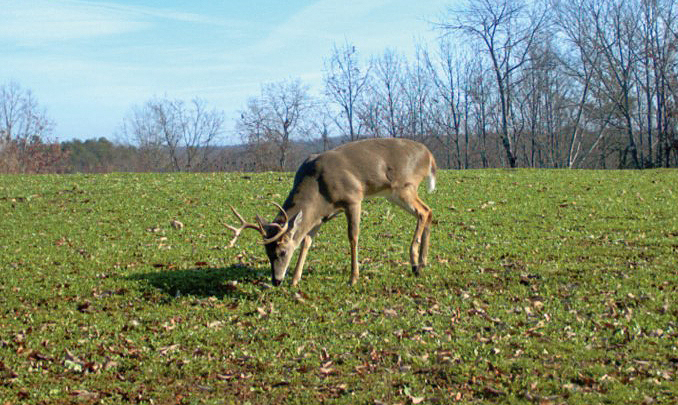
Medium-leaved types (like White Dutch) are, as you’ve probably guessed, intermediate in features; these perform well under a wider range of situations. Constant browse pressure is tolerated best by the small-leaved types. As said, small-leaved types do not grow as tall as the larger-leaved clovers, but they have numerous small leaves and many stolons so they are an excellent choice for areas that receive heavy browse pressure.
For most people a “blend” of different varieties of both red and white clover possibly combined with chicory and/or alfalfa will be the best selection. The specific growing/management conditions will bring the favorable cultivars to the forefront. One important consideration to note is that large leaved clover doesn’t mean more tonnage per acre. The yield of most white clover types (large-leaved through to small leaved) is comparable if each variety is cared for properly.
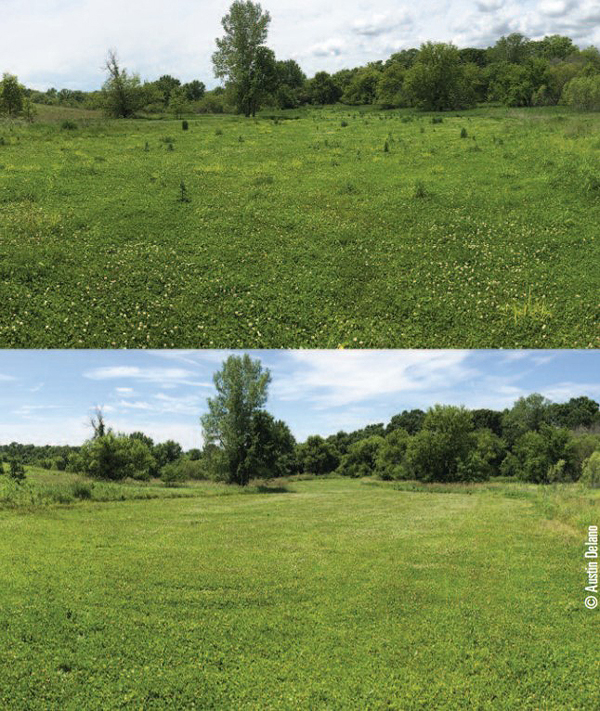
Whether you are located in Minnesota, Ontario or New York in the north, or Arkansas, Alabama or South Carolina in the south, most gamekeepers should have perennials on their food plot menu. In fact, many of those managers could consider perennials to be the cornerstone of a sound food plot program.

















